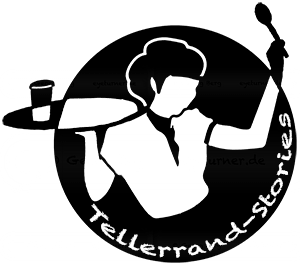Away from the hustle and bustle of the Titlis, Engelberg in central Switzerland offers the perfect Swiss idyll. From Lucerne on Lake Lucerne, you can reach the high valley in the canton of Obwalden in just 45 minutes by train. If you leave cliff walks and via ferratas to one side, you will discover cows, cheese alps and hiking bliss. Six tips for a real Heidi feeling in Engelberg.
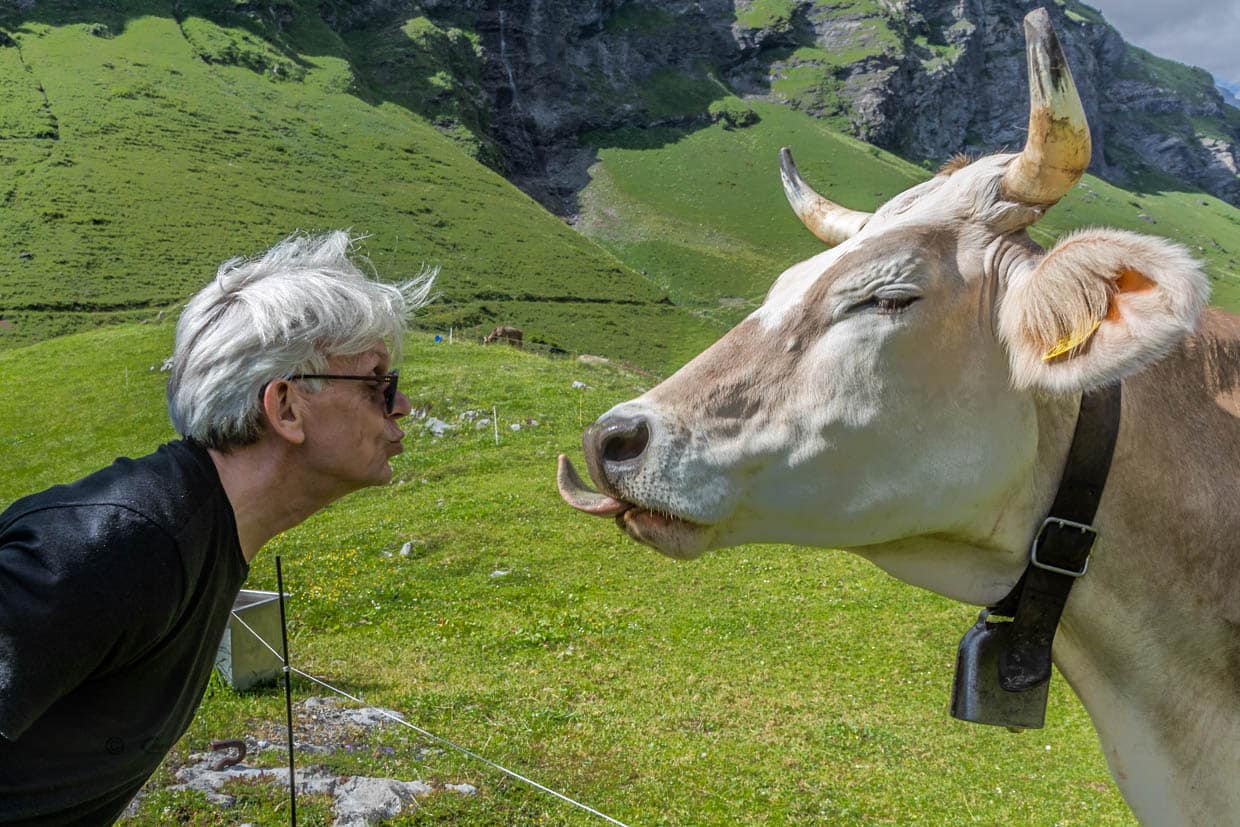
Time out on the alp
A night on a Swiss alp brings you down – even if it’s uphill. No net? All the better. It connects you with the people and animals who spend the summer here. You don’t have to kiss a cow to feel nature. A visit to the Hobiel Alp in the Engelberg valley, a typical alpine pub, offers the perfect time-out.
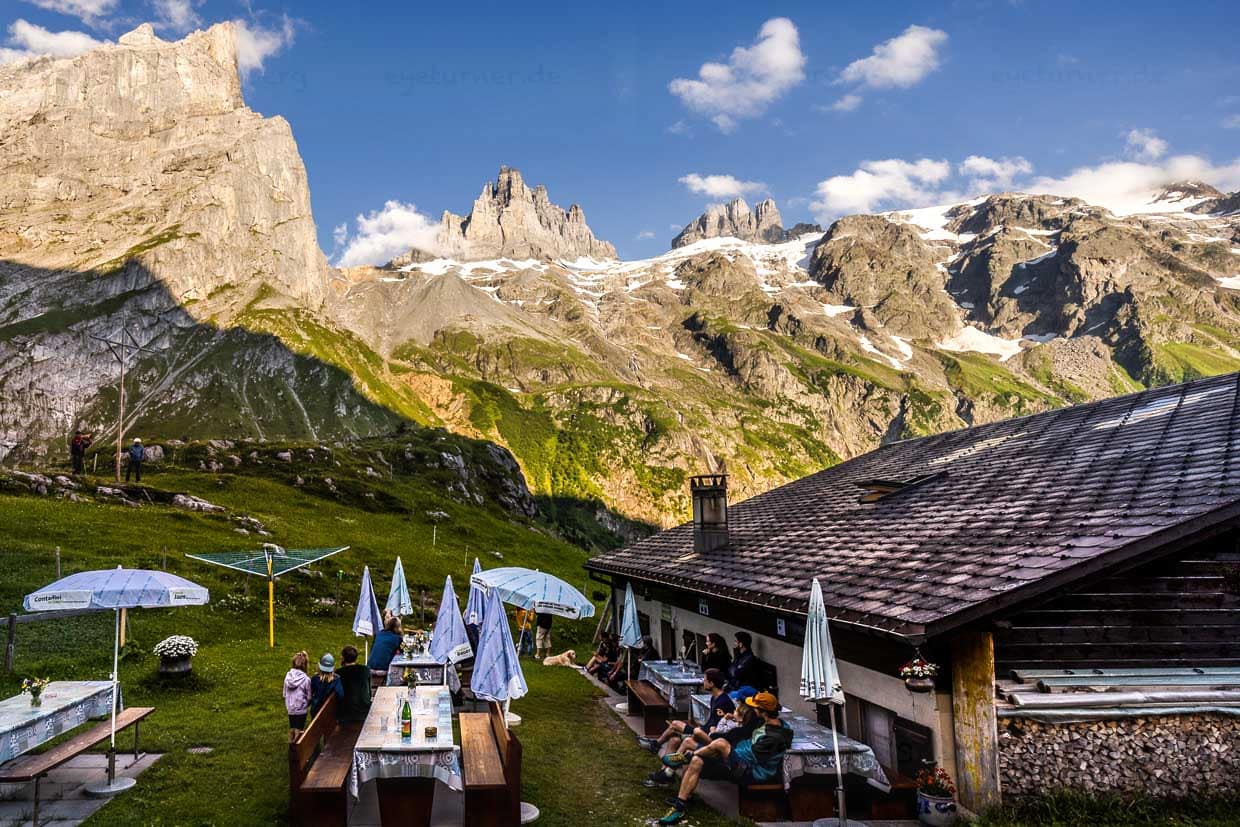
The Zurfluh family has been running the Hobiel Alp for decades. Grandfather Sepp will be spending his 69th summer in the rear Engelberg valley in 2025. Three generations live here during the summer months. Ruedi Zurfluh looks after the livestock, while grandmother Theres and Ruedi’s wife Sibylle run the inn and the guest camp. The four children help out. Two communal rooms are available to hikers for the night. There is no mobile phone network, but those who stay can experience a call from the patron saints.
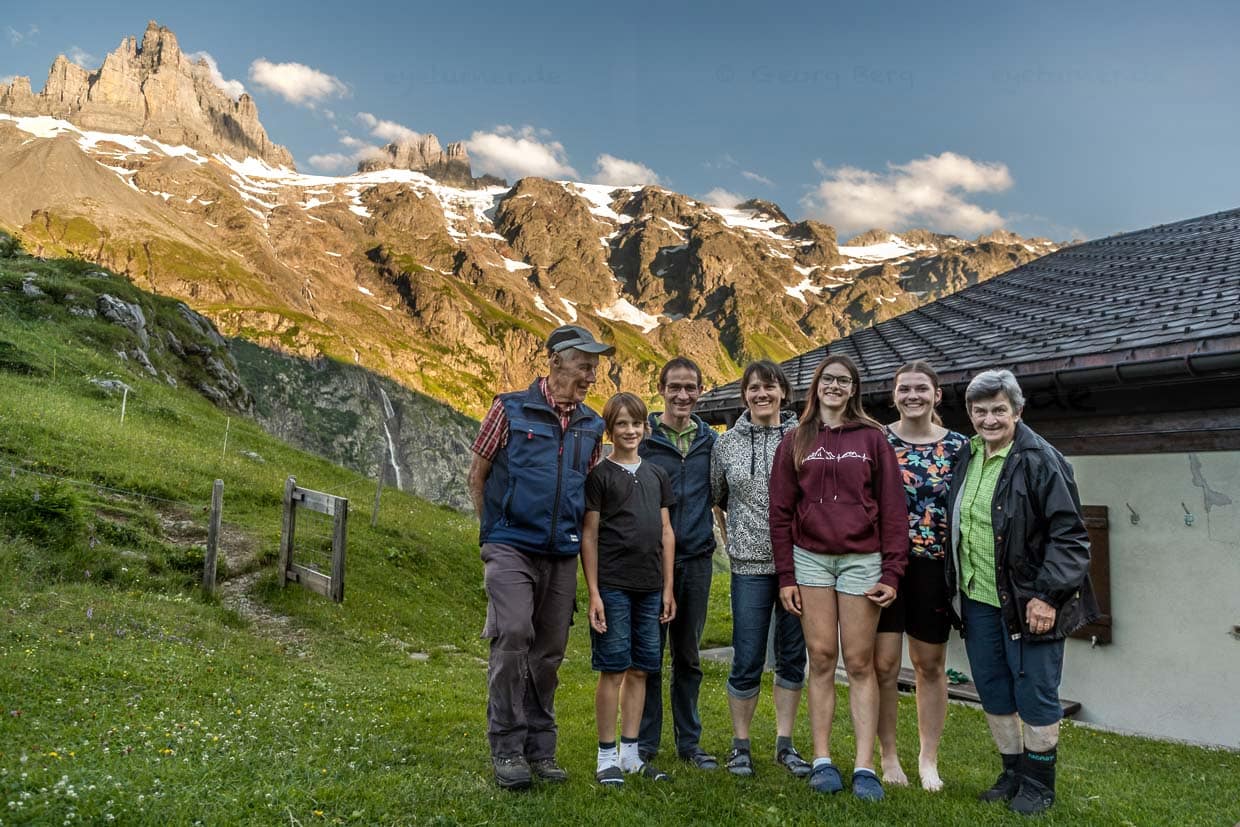
Alpine call of the dairymen
Sepp Zurfluh stands at the Alpine cross above the Hobiel hut, puts the wooden folle to his mouth and calls out in all directions. The “prayer call”, a centuries-old tradition, asks the saints for protection for the alp, animals and people. This ritual, once also a means of communication among dairymen, has become rare. But in Central Switzerland, dairymen like Sepp Zurfluh keep the connection between nature and culture alive. In the past, if you heard the call in the evening, you knew that all was well with your neighbour.
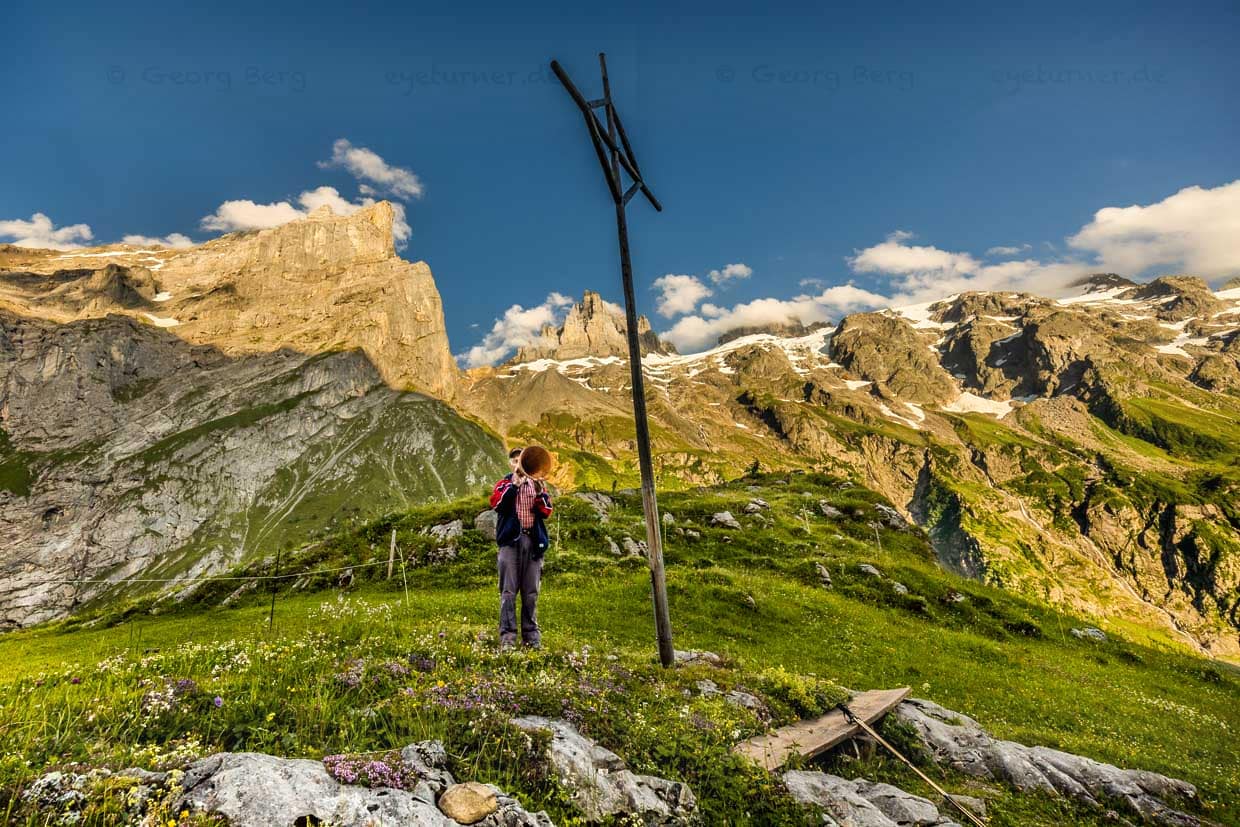
Alpenglow
The sun sets, Sepp Zurfluh finishes the “prayer call”, and almost magically, as if the mountains were answering, the Grosser Spannort opposite the Hobiel Alp glows in glowing orange-red.
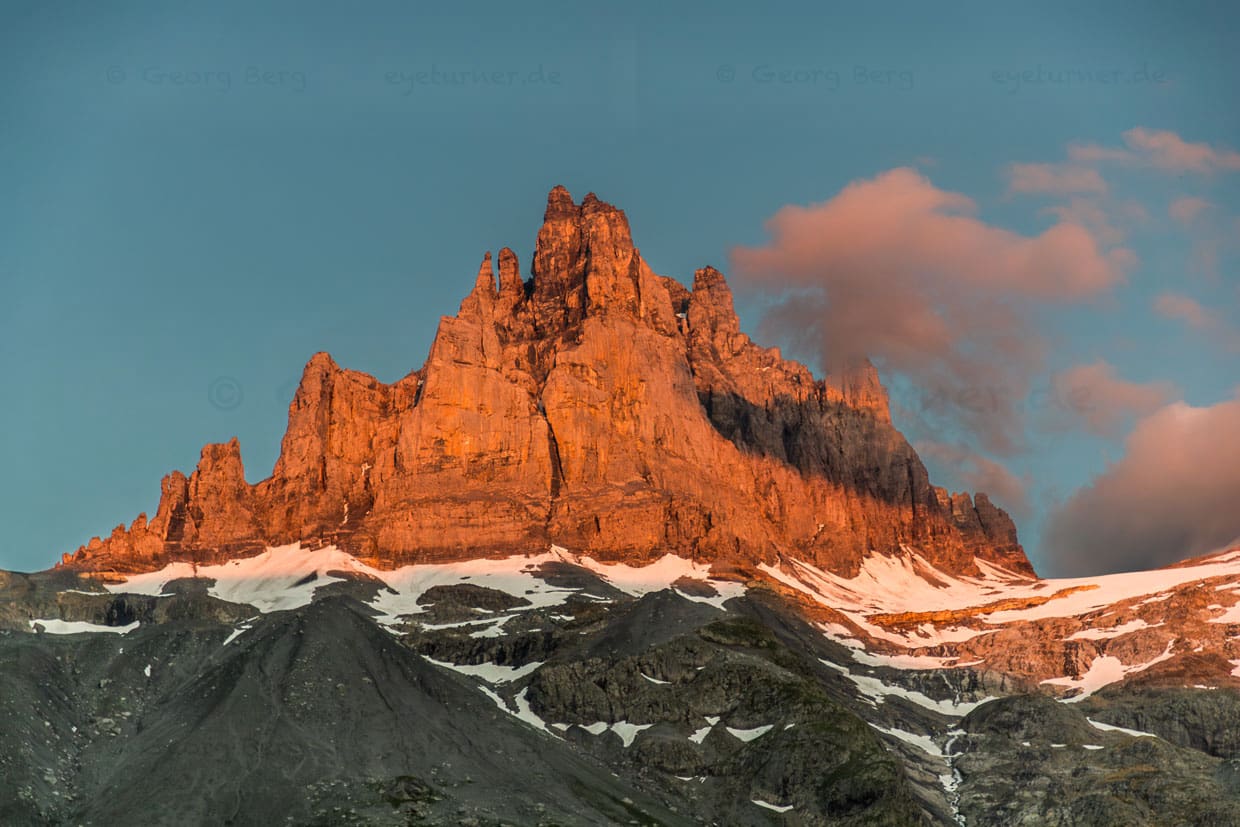
Älplermagronen
The Älplermagronen are almost as beautiful as the alpenglow in their casserole form. They are not called a “signature dish” on a down-to-earth alp, but they are the Zurfluh family’s culinary flagship. Potatoes, noodles, onions and plenty of alpine cheese, served with apple sauce – this savoury, filling dish delights hikers and day visitors alike. Other alpine farms in the region also serve it.
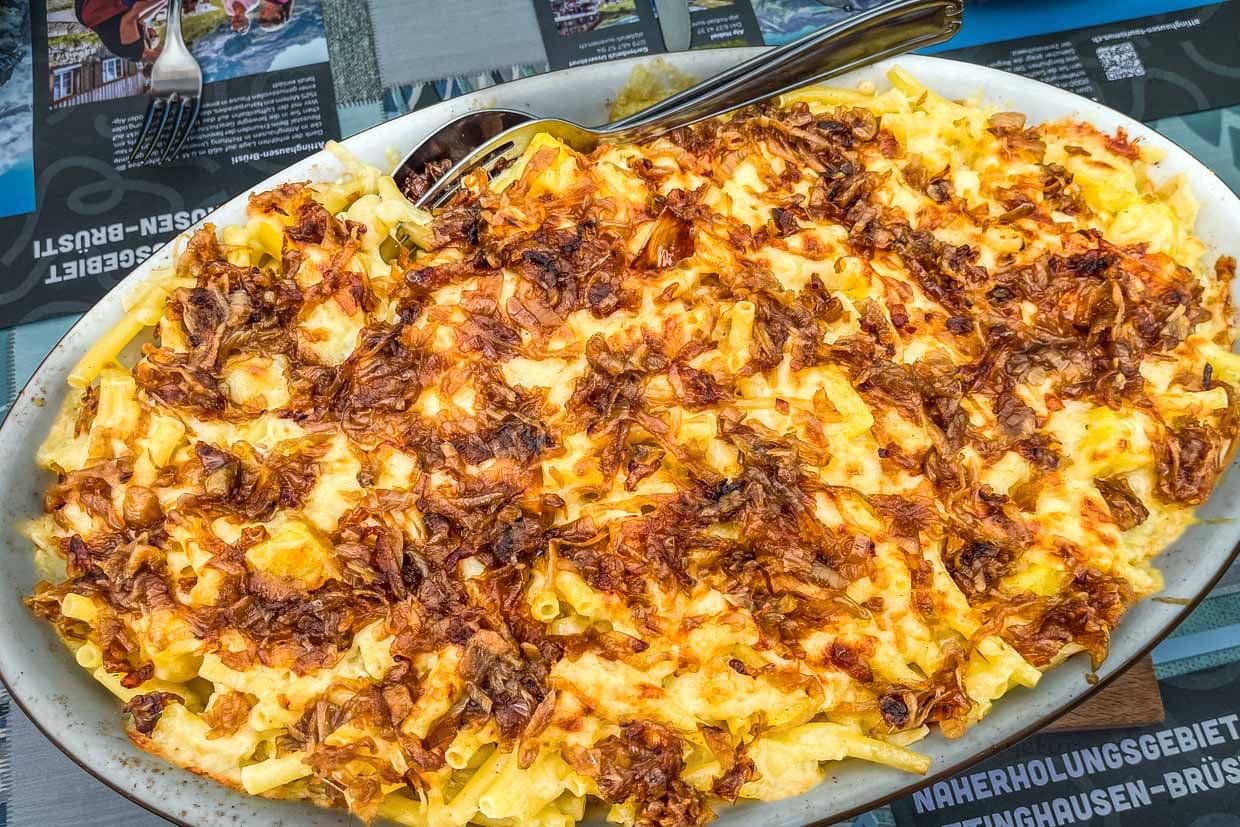
Ride on the Buiräbähnli railway
The Buiräbähnli, the small farmers’ cable cars, are the opposite of the Titlis Rotair, the revolving cable car that offers spectacular panoramic views at an altitude of 3,031 metres – when other passengers are not blocking the view. You sit alone in the Buiräbähnli. The best thing is that you can start the cable car yourself. A call to the station telephone is all it takes, and as soon as you sit in the cabin and press the button, the cable car starts moving.
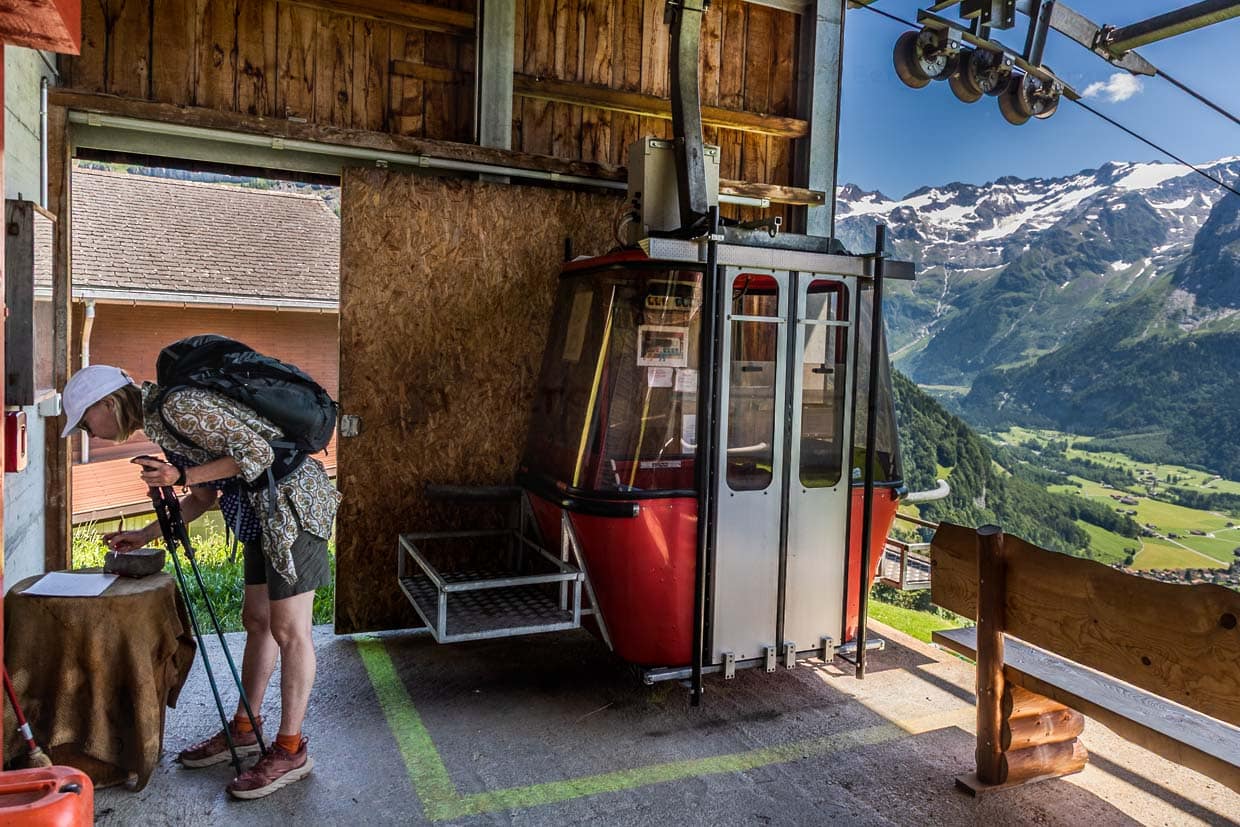
These rustic cable cars, often operated by farmers, facilitate access to remote Alpine farms and pastures. There are many Buiräbähnli cable cars in the Engelberg Valley, which are also used by tourists. They are part of the “Buiräbähnli-Safari”, a 46-kilometre hiking route that connects several of these private cable cars.
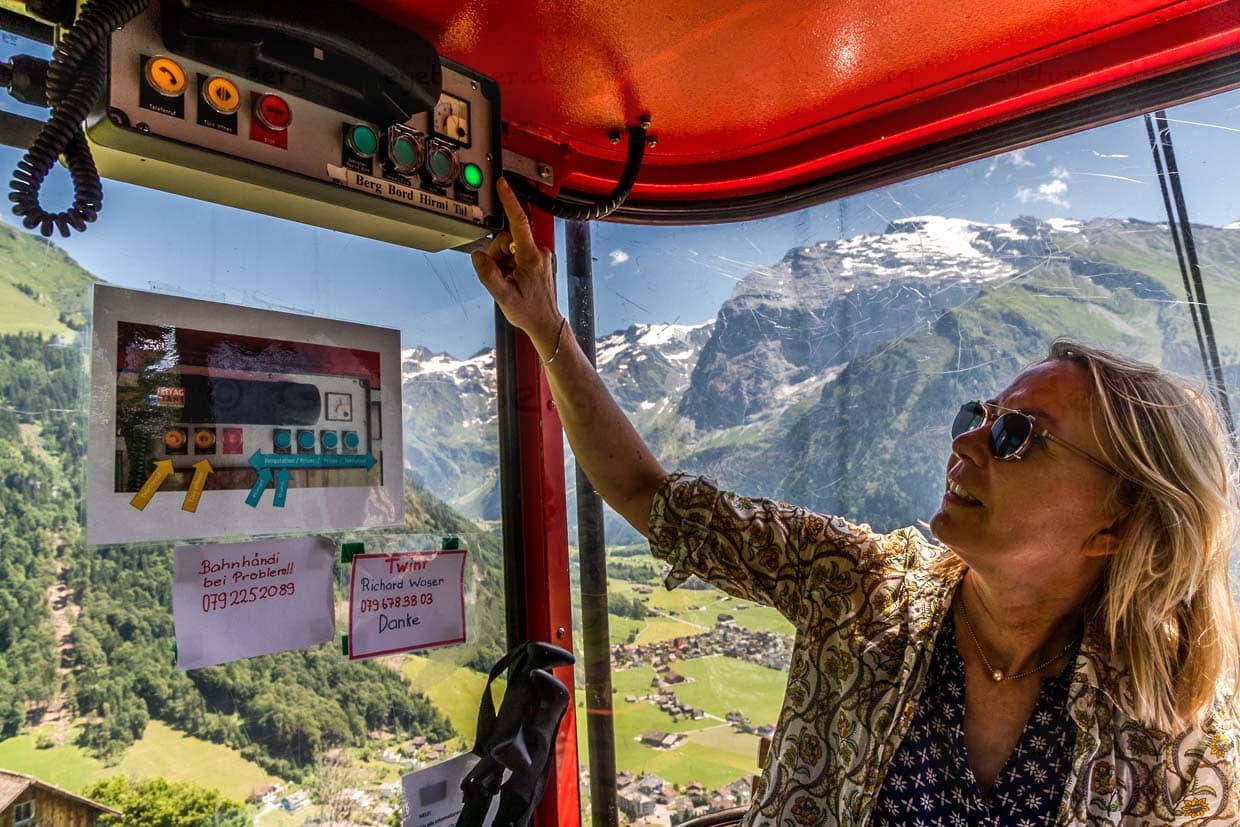
Alpine haymaking on the monastery wall
Haymaking has a long tradition in Central Switzerland. Wild haymaking involves mowing steep, high-altitude meadows by hand, as machines or animals cannot reach them. This work ensures the biodiversity of the rough pastures and protects against avalanches. But even in flat regions, such as in front of the walls of the Engelberg Benedictine monastery, the hay is cut with a scythe and turned to dry. The sun shimmers, insects buzz and the respect for this arduous labour grows. Haymaking symbolises the mountain farmers’ close connection with nature and the annual cycle.
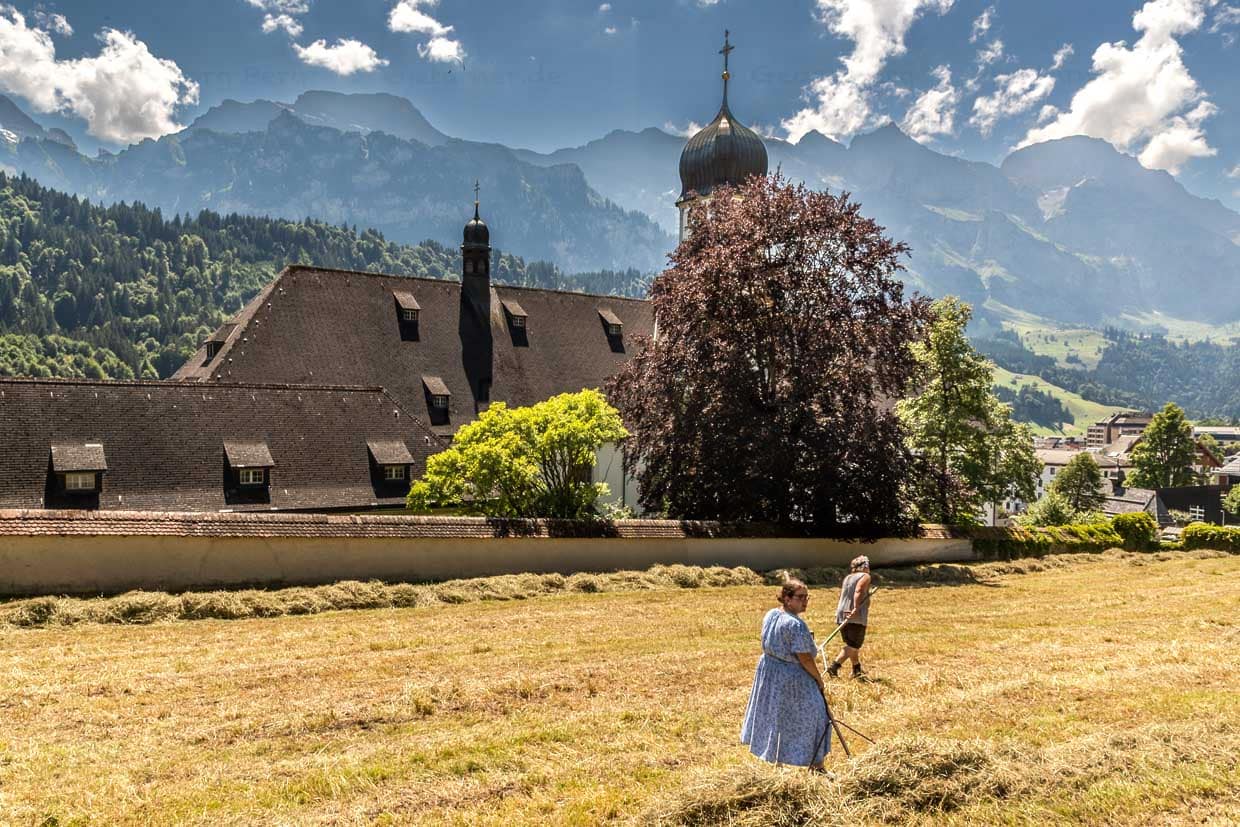
The starting point for a hike to the Hobiel Alp is the Führenalp valley station, which can be easily reached by shuttle bus from Engelberg. You can hike up from the valley station or take the Führenalp cable car. The Hobiel Alp describes what happens next here.
The research trip was supported by Engelberg-Titlis Tourism
